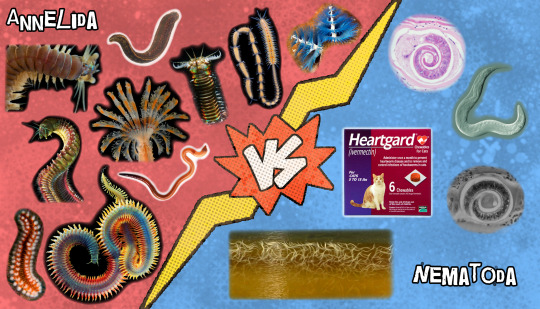#sorry y'all I'm literally writing my dissertation on annelid worms <3 come talk to me about bioturbation
Text
Phylum Round 1

Annelida: Segmented Worms. This group includes earthworms, leeches, and many classes under the umbrella of "polychaete". This diverse phylum encompasses deposit feeders (eating dirt), detritivores, scavengers, deadly ambush predators, filter feeders, parasites, herbivores, and more. They are broadly defined by their repeating body segments and parapodia, which are nubby appendages used for both movement and breathing. Some have curved jaws for catching prey or scraping detritus off of rocks, while others have wide, elaborate feather-like fans for filter feeding. While able to crawl freely, a majority of marine Annelids spend most of their time in self-built tubes or burrows. Among their many important functions, they play a key role in mixing soil/sediment, breaking down decaying organic matter, and providing a key food source to countless other animals.
Nematoda: Roundworms. Split between free-living and parasitic, terrestrial and aquatic, Nematodes inhabit just about every environment on Earth. Nematologist Nathan Cobb once said (paraphrased) that if all matter on Earth disappeared besides Nematodes, we would still be able to identify where everything used to be, simply by the thin layer of nematodes left behind. In the harsh environment of Antarctica's Dry Valleys, these worms dominate the relatively barren ecosystem. The roundworm C. elegans is a widely-studied model organism in science and medicine. Nematodes are also known to parasitize humans, due to their ability to enter a dormant larval state within the muscle of a carrier animal. This is part of why we fully cook pork; to kill any parasites in the meat.
#showing my bias here oops#WORM ON WORM VIOLENCE#sorry y'all I'm literally writing my dissertation on annelid worms <3 come talk to me about bioturbation#and nutrient cycling at the sediment-water interface <3333#nematodes are cool too though! very interesting little guys#cw parasites#annelida#nematoda#animal bracket#tumblr bracket#bracket tournament#poll bracket#phylum round 1#phylum
100 notes
·
View notes